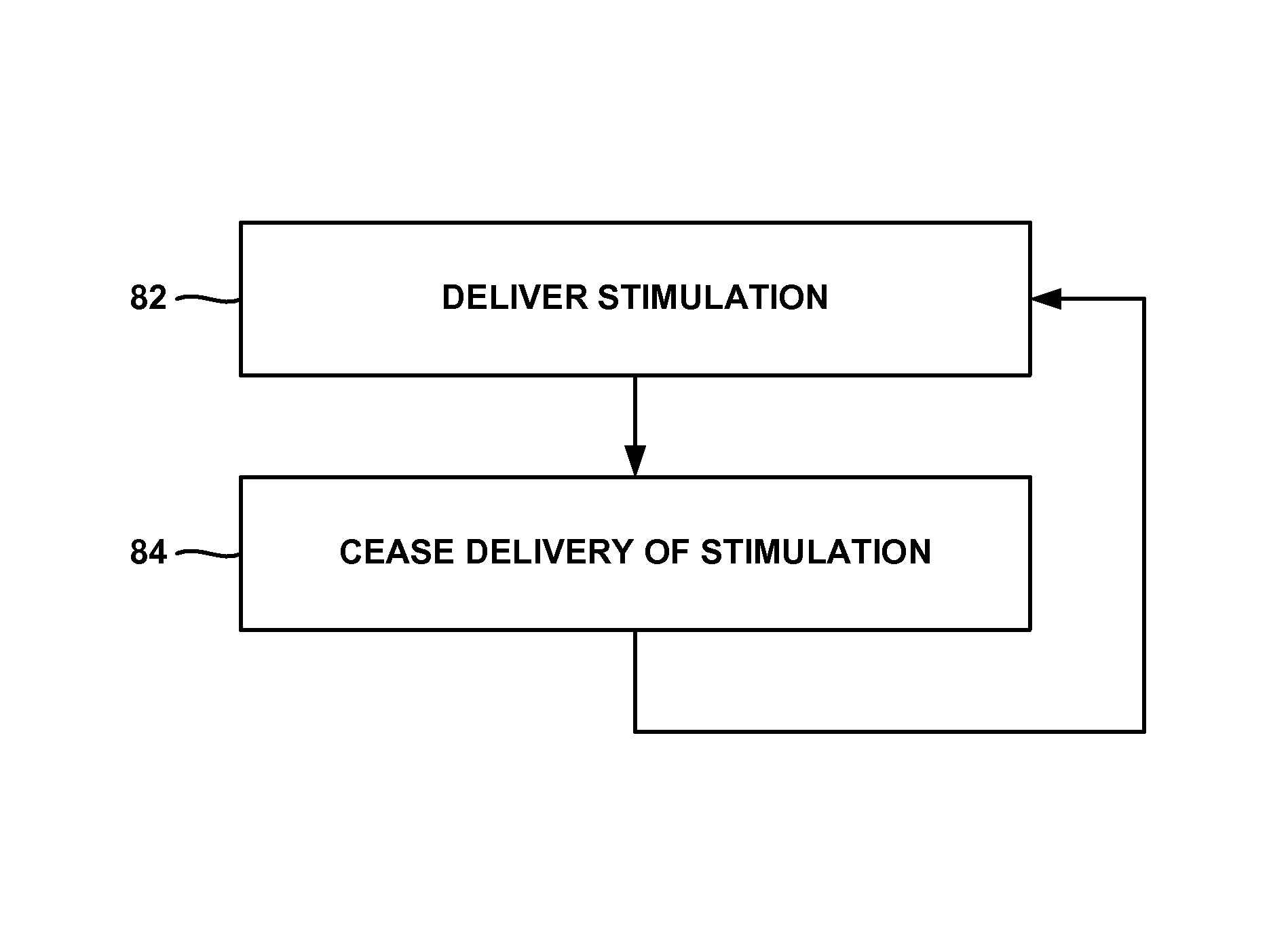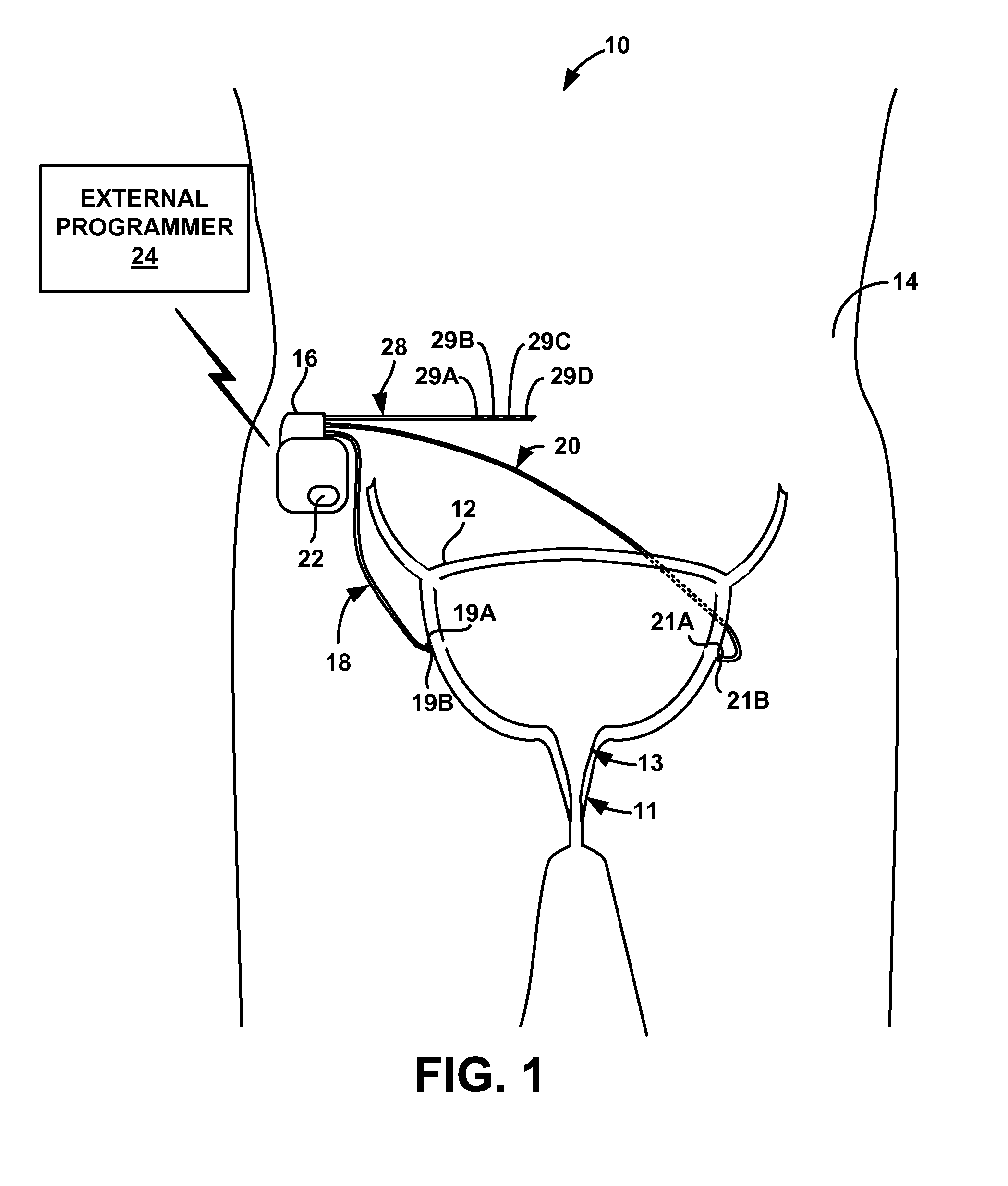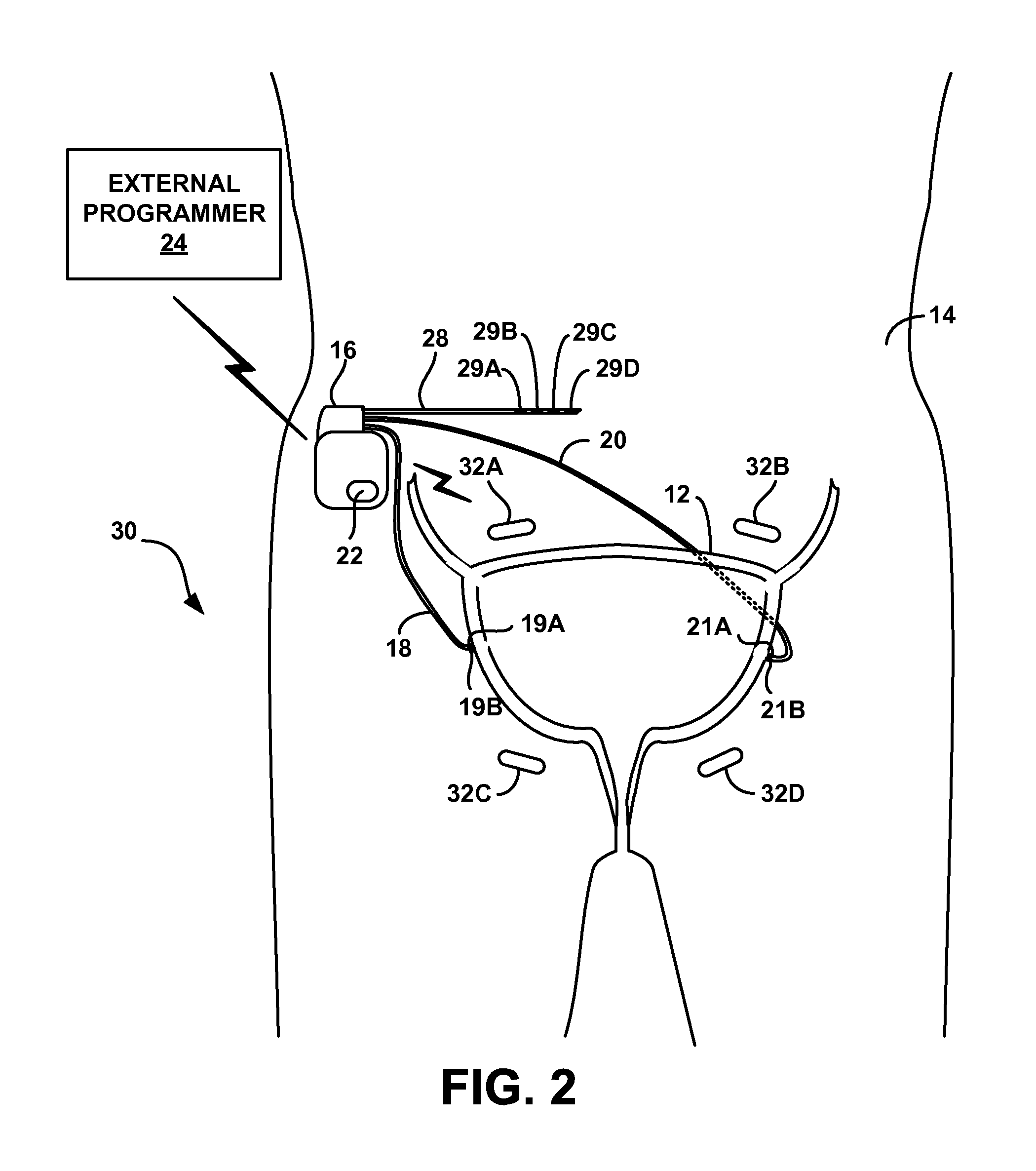Stimulation therapy for bladder dysfunction
a technology of stimulation therapy and bladder dysfunction, which is applied in the field of implantable medical devices for treating bladder dysfunction, can solve the problems of affecting people of all ages, genders and races, compromising urinary tract performance, and bladder dysfunction, so as to reduce the urgency of voiding, reduce the frequency of bladder contraction, and reduce the intensity of stimulation
- Summary
- Abstract
- Description
- Claims
- Application Information
AI Technical Summary
Benefits of technology
Problems solved by technology
Method used
Image
Examples
example 1
[0211]FIG. 10 is a graph that illustrates a change in bladder contraction frequency in response to electrical stimulation. The data illustrated in FIG. 10 was obtained from a plurality of tests performed on laboratory rats. During the tests, bladder contractions of one or more test subjects were observed during an approximately 45 minute period (i.e., −15 min to 30 min). During observation, the test subject was provided with electrical stimulation to a spinal nerve for a period of time, as illustrated at 132. For each test run (i.e., each 45 minute observation), a frequency of bladder contractions was determined at approximately 5 minute intervals. The determined frequencies of bladder contractions were then normalized (i.e., divided by) by a frequency of bladder contractions of the test subject at time zero. The normalized bladder contraction frequencies are graphed in FIG. 10.
[0212]The graph illustrated in FIG. 10 plots frequency versus time. Frequency (normalized %) indicates a f...
example 2
[0216]FIG. 11 is a graph that illustrates a change in bladder contraction frequency in response to electrical stimulation. The data illustrated in FIG. 11 was obtained from a plurality of tests performed on laboratory rats. During the tests, bladder contractions of twenty-six test subjects were observed during an approximately 40 minute period (i.e., −10 min to 30 min). During observation, the test subject was provided with electrical stimulation to a spinal nerve for about 10 minutes, as illustrated by stimulation period 142. For each test run (i.e., each 40 minute observation), a frequency of bladder contractions was determined at approximately 5 minute intervals. The determined frequencies of bladder contractions were then normalized (i.e., divided by) by a frequency of bladder contractions of the test subject at time zero. The normalized bladder contraction frequencies are graphed in FIG. 11.
[0217]Intensity of stimulation delivered to the test subject is indicated by the shape o...
example 3
[0220]FIG. 12 is a graph that illustrates a change in bladder contraction frequency in response to electrical stimulation for different durations of stimulation. The data illustrated in FIG. 12 was obtained from a plurality of tests performed on Sprague-Dawley female laboratory rats. During the tests, bladder contractions of one or more test subjects were observed during a period prior to, during, and after stimulation (labeled in FIG. 12 as −15 min to 20 min). The key in FIG. 12 illustrates the number of rats (n) tested for each condition. By considering two factors (inhibitory effects to different time points in control and stimulated rats), the inhibitory effects by stimulation is statistically significant. Such analysis has been tested by 2-way ANOVA. The null hypothesis is that stimulation does not affect the bladder contractions. There is less than 5% chance that the null hypothesis is true. Such results were repeatable in many rats, as indicated by the n value. For example, 8...
PUM
 Login to View More
Login to View More Abstract
Description
Claims
Application Information
 Login to View More
Login to View More - R&D
- Intellectual Property
- Life Sciences
- Materials
- Tech Scout
- Unparalleled Data Quality
- Higher Quality Content
- 60% Fewer Hallucinations
Browse by: Latest US Patents, China's latest patents, Technical Efficacy Thesaurus, Application Domain, Technology Topic, Popular Technical Reports.
© 2025 PatSnap. All rights reserved.Legal|Privacy policy|Modern Slavery Act Transparency Statement|Sitemap|About US| Contact US: help@patsnap.com



